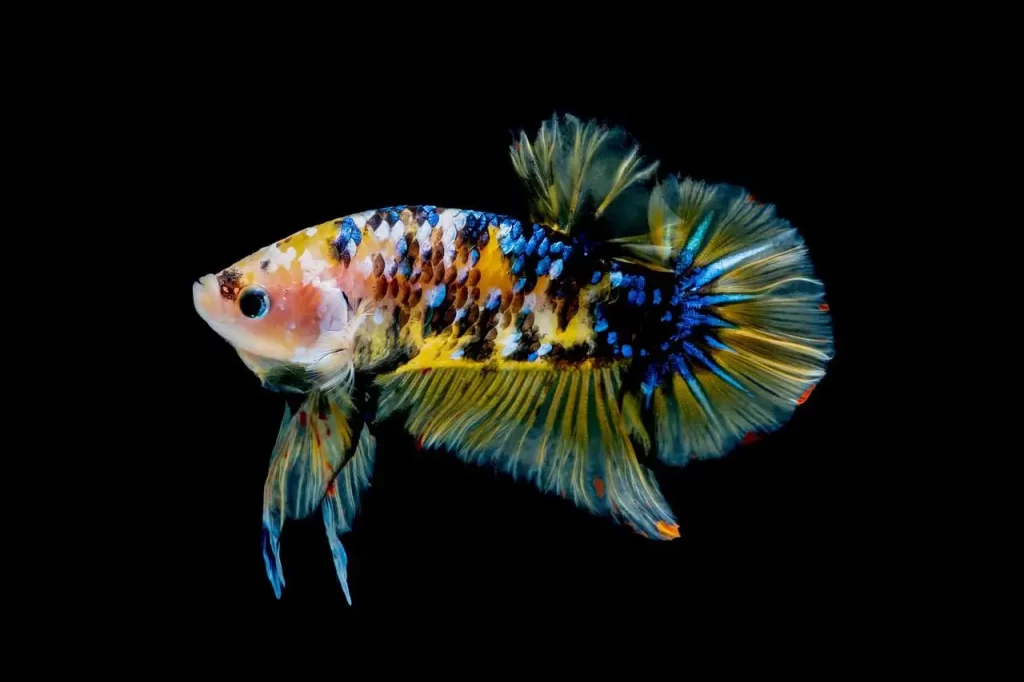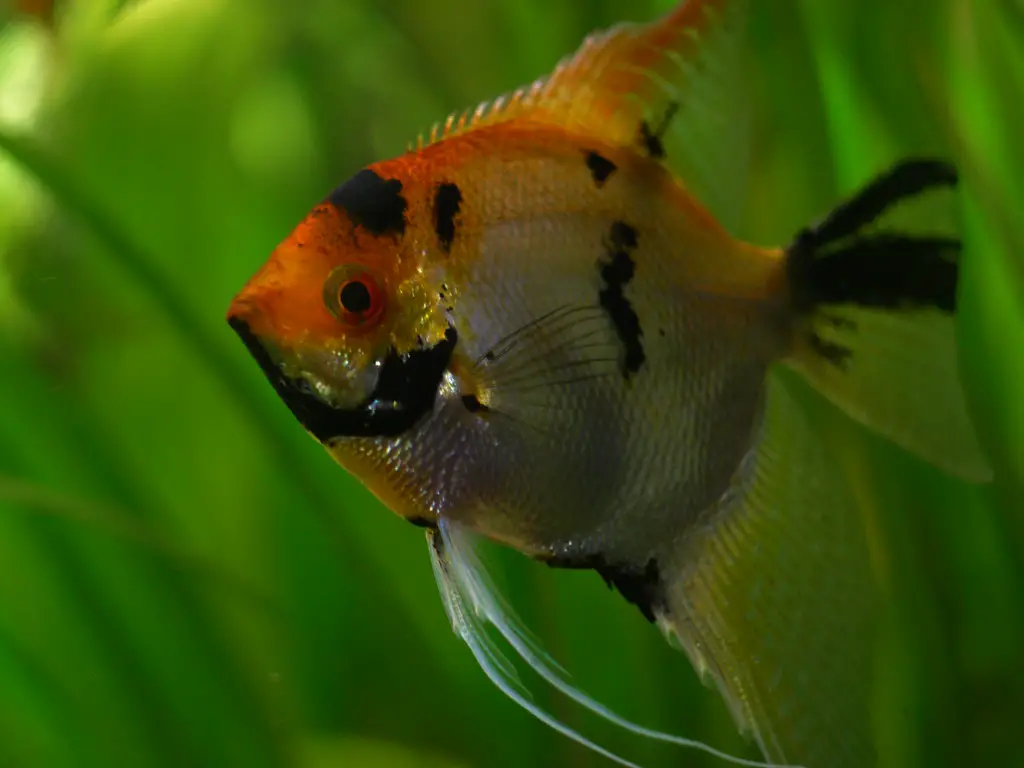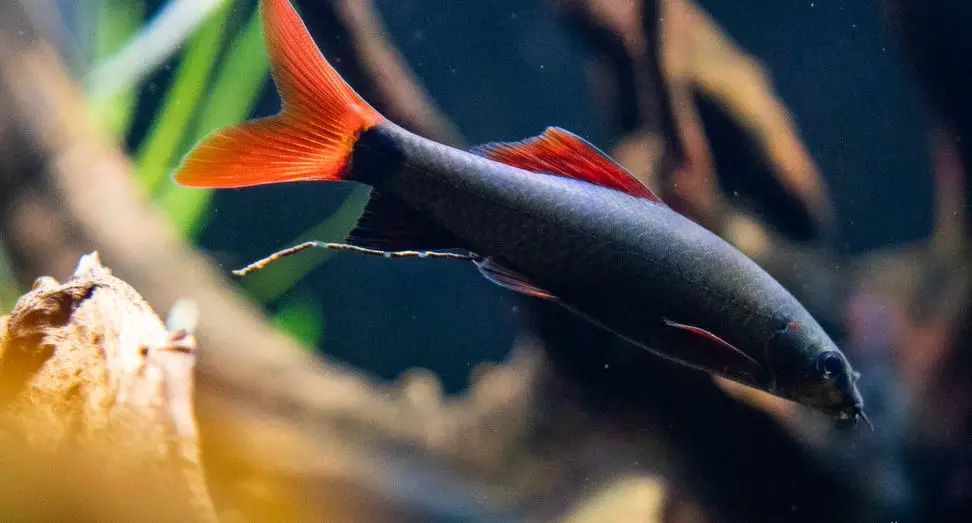Small tropical fish, which is also called Anabantoidei, is Labyrinth fish. The natural habitat of this fish is the Asian region and prefer warm temperature. Labyrinth fish are unique in characteristics to other fish.
Fish use their gills to help them breathe, but labyrinth fish has a labyrinth organ addition to their gills to breathe.
Introduction to Labyrinth Fish
Labyrinth Organ is at the back of the head of fish just behind the gills. The thin layer of bones called lamellae protects the Labyrinth organ. The layer is thin to let the oxygen pass through it, as soon as the oxygen passes through the blood circulation system distributes it to different parts of the body.
Due to the labyrinth organ, these fish can survive conditions with low oxygen levels in the water, muddy and polluted water. They can also survive in condition with less water or no water unless the place has a moist with the help of the labyrinth organ. Some few fishes in the labyrinth category can crawl from one water source to another with their pectoral fins. There are one species of labyrinth fish Climbing Perch, which is known to climb trees to search for habitat.
Despite their unique organ labyrinth, the fishes are not born naturally with full functional labyrinth organ they develop naturally over time. We can see much Labrinth fish coming into the surface of the water to take the air. Once the labyrinth organ is fully mature, the fish uses the labyrinth organ more than gills. If the fish is not introduced to the surface and exposed to use the labyrinth organ, then the result may be the death of the fish.
Behavior and Breeding
As unique on their breathing process labyrinth fish, they are also unique on their reproducing and raising their off-spring into the world. They build their nests in the plants and other substrates, mostly in the bottom area. They tend to keep their fertilized eggs in their mouth and also usually build a bubble nest in the water.
Unlike other species, the male fish is responsible for guarding and raising the young ones; the job of female fish is only to lay eggs. The male fish create the bubble in the water, and the eggs stay in the bubble nests until they are fully hatched.
Once labyrinth fish hatches the eggs, the responsibility of raising the young entirely falls upon the male labyrinth fish. They prevent the young ones from danger from other fishes and preventing them from wandering too far off the nests. Due to this reason, male labyrinth fish build their bubble nest in the areas where the currents are low.
Now we know that the purpose of building a bubble nest is to breed and protect the newborns. Male fish that are raised without the female also tend to make a bubble nest. If you see this happening, this is the nature of their natural habitat.
Water and Habitat
Labyrinth fish are naturally the habitats of the stream, rivers, and ponds. You can also find them in places with low water levels and pollution like an irrigation canal, flooded rice fields, and polluted water sources.
The fish are very undemanding of their living conditions and water quality level and can survive in the acidic condition of pH: 6.5. The water they prefer is medium or hard water to live.
The temperature range of the labyrinth fish is warm and can thrive better in the temperature of 20-27 degrees Celcius.
To keep the fish, you don’t need any filtration system as they can resist the slight acidic level in the water. I don’t recommend you to build the bubble nest filtration in the case of this fish.
A special case with the Chocolate Gourami is that they require a high level of acidic water to survive.
Feeding the labyrinth Fish
Due to their extreme nature in survival, these fish are not picky about their diets and foods. Naturally, they eat small creatures, and plants found the ponds, rivers, and canals.
In the aquarium, you can serve any food, and they will accept it, but not to forget you provide them with food with high protein. Likely as their natural nature, they also eat mosquito larvae, blackworms, brine shrimp, and small flies.
You can also provide the fish with small pieces of vegetables and plants to keep them occupied.
Species Of Labyrinth Fish
Labyrinth fish are the subspecies of the large order Perciformes also known as perch-like fish. Perciformes is the largest order of the vertebrate. It contains 18 sub-orders(sub-species) and about 160 families of fish of all sizes and sorts.
The fish are famous by the name of Anabantoids as they belong to the Anabantoidei sub-order of the Perciformes. Perciformes contains three families of Anabantoids they are:-
- Osphronemidae
- Anabantidae
- Helostomatidae Family
In the Perciformes, there are 20 genres and 128 described species and yet seven who are not described.
Osphronemidae Family- Gouramis
Osphronemidae Family has is considered to be the largest anabantoid family among the subspecies of Perciformes. The large family contains four other sub-families, 96 species, and 15 genera. These fish are found in Asia, found in Pakistan, India, Malay Archipelago, and to the northeastern side of the continent to South Korea.
Among the 96 species of the Osphronemidae family contains some of the very popular aquarium fish. Some of the famous fish are Betta splendens and the famous gouramis fish like Trichogaster(Blue gourami), Trichopodus(Snakeskin gourami), Trichopodus genus, the giant gourami Osphronemus genus, and various paradise fish.
Anabantidae Family – Climbing Gouramis
Anabantidae family or Climbing gourami is the second-largest Anabantoid family. The family includes four genera, 31 described species, and seven species. These fish can be found in some parts of the Indian region( Mainly India and Pakistan) and also in Philippine.
The male guards the eggs and protect the young ones from the dangers. The fish are called ” Climbing Gourami” because of the ability to climb trees. Experts also refer them as ” Walking fish,” they don’t walk, but they pseudo walk by extending their gill plates and using them as support to push their body forward with their fins and tails muscle. The fish are not usually kept in the aquarium but instead used as a food in Asian cuisine.
Helostomatidae Family – Kissing Gouramis
Helostomatidae fish is the third family in the Perciformes. The family contains one genus, and one described species making them the smallest family among the three.
The Species are famous for its name “kisser” or “kissing fish” because of its classification into Kissing Gourami Helostoma temminki.
You can find this fish mainly in Indonesia and Thailand. Although Helostomatidae fish is one of the most popular fish in the aquarium, people mostly use it as a food fish.
The fish has two beautiful color coloration of green and orangish pink. The origin of color green fish is from Thailand and the orangish pink form the java. There is also the availability of the mutated breed of this fish with the small rounded body, the mutated fish is known as ” Dwarf Kissing Gouramis” or ” Ballon Pink Kissing.”
Betta Fish
Betta fish is also commonly known as “Siamese fighting fish.” This fish is a natural inhabitant of the southeast Asian region. These fishes are small colorful, and elegant to watch in the aquarium.
These fish can grow up to 2.4 to 3.1 inches long and can live for about two to three threes usually.
The fish is well known for its aggression and fighting behavior. The fish fight with its wide gill cover nipping other fishes gill. People seem to love the aggression of the bettas in the aquarium. This is making the fish popular.
Bettas in the wild are different in color coloration than in the aquarium. The bettas are available in different variations of the color, vibrant golds, reds, blues, greens, and violets. The aquarium bettas are beautiful to look than the bettas in the wild of dim green color.
Bichirs
Bichirs are one of the oldest living species lineages leading to the bony fishes of old times. They are large fish that have a unique look with their bright coloration. The fishes have long eel-like bodies that make it very great for the tank to provide uniqueness.
The fishes grow up to ten to thirty inches in length and a lifespan of fifteen to twenty years.
Bichirs are said to have moderate temperant. They don’t cope with smaller fish because they tend to eat or injure them, but they have no problem living with larger fish.
The fish is a carnivore and eats small insects and larvae of small insects.
Aquarium Set-up
Labyrinth fish is known for surviving in most extreme conditions. Due to their survival skills, they make it very easy and handier for the beginner to bring into the aquarium. Tank setup for the labyrinth fish is easiest and very economical too.
If you are a beginner aquarist check out our article on Fish Tank Setup for Beginners.
Tank Size
The tank setup for labyrinth fish is quite easy. The tank size for every fish is to be different. Labyrinth has the variation of the length of high difference in the range.
Water Type
Water quality is not of a big concern in the labyrinth fish as they prefer water with a little acidic property, and they also don’t require crystal clear water, they can also survive in a little unclean, polluted water. The filter is not necessary for the aquarium of the labyrinth fish because of the male labyrinth fish make bubble nest contain and protect the younger ones.
Temperature
The temperature range of the labyrinth is 20-27 degrees Celcius. They prefer hot temperatures. Parosphromenus genus doesn’t prefer the high temperatures like other labyrinth fish do. In the indoor aquarium in hot places, the heating mechanism is not necessary, but in cold places, you need the heating mechanism.
Acidity Level (pH Level)
There are some of the famous fish in the category of Anabantoid like Siamese Fighting fish, the gourami, and the Paradise fish who prefer to live with the high acidic level in the water. They prefer to live in water with low currents. Chocolate Gourami especially loves to live in a wild environment with the highest of the acidic level in the water.
Foods
In the natural condition, you can find labyrinth fish on harsh conditions like low levels of water, polluted water, range of different flows (fast-flowing river, ponds, and slow canals). This makes the caring and feeding of the fish very easy. The fish takes all foods, but I recommend you to feed flakes and pills, the fish also enjoys the black worms and brine shrimp.
Decoration
Decoration of the aquarium for labyrinth fish is suggested to bring some rocks and drifts woods, for the fish to hide and play around. Labyrinth fish needs the imitation of the natural surrounding so you could add small plants to let your fish enjoy the aquarium too.
Lighting
Lighting the aquarium for the labyrinth fish is to be bright light like light blue or light green is often recommended. But the fish doesn’t seem to enjoy the bright light.
Number of schools
Labyrinth fish are semi-aggressive fish; they don’t seek fight but don’t back down from one. Especially male labyrinth fish, while defending and protecting the fish seem to get into a quarrel. The fish don’t like being alone and prefer to live in the school. Like other fish schools of 6 fish is recommended for the labyrinth fish too.
Tank Mates
Peace-loving Barbs, Tetras, and bottom-dwelling Gobbies and Catfish can be great tank mates with labyrinth fish. Keeping labyrinth fish with aggressive fish is like cichlids is not recommended because tension will rise in the breeding seasons.
Care Of the Fish
Being one of the easiest fish to the care, they are also popular among the fish keepers.
Caring of the labyrinth fish requires a moderate inspection of the aquarium for the fish’s movement and injuries, the sick fish stays in the bottom of the tank and doesn’t make movements or makes slow moments.
The fish are not injury prone and easily catching the diseases. If you find the fish with any injury or sickness, the fish should be isolated from other fish and treated. This will prevent infection to not spread among other fish.
Properly fed and cared labyrinth fish can live a long life of more than 5-6 years. The fish can handle the extreme condition of water quality, but it is nice to change 20-25% water once a week, it will make the tank look nice and see the liveliness of the fish and its natural movements and playfulness.
If any severe conditions happen of contamination happens, identify the fish with contamination and isolate and treat them. If the situation seems worse contact the nearest pet store and takes help for the expert there
Conclusion
After reading the article above, we know a lot of things about the labyrinth fish. The fish has a very great set of survival skills and tricks and can live under severe conditions of low oxygen and pollution.
There is a famous saying that “lotus blooms better on the clay ” likewise, living on these severe conditions, these fish are magnificent to watch in the aquarium and have a unique ability to take air from the labyrinth organ.
With proper care and love, these labyrinth fish could be the people’s pleasure in the aquarium.
If you have any comments or questions, feel free to contact us or comment down below.






